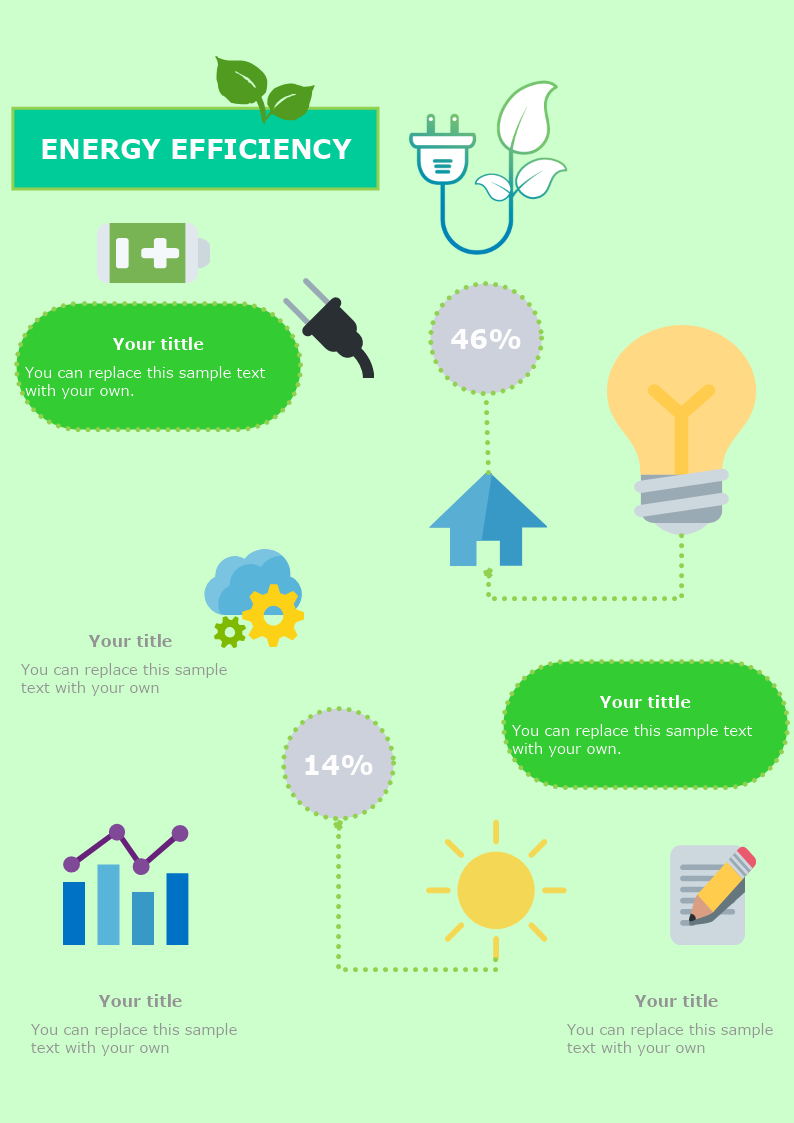This is a free Green Energy infographic template to show the importance of being eco-friendly and how to optimize our living to save energy and time for the planet. This type of green energy infographics template can be used by institutions and companies for flyers, seminars, presentations, or distribution materials. The template is a 100% customizable and you can edit every aspect of it with a few simple clicks in MyDraw.
Download Template:


Download Template:



Green energy comes from natural sources such as sunlight, wind, rain, tides, plants, algae, and geothermal heat. These energy resources are renewable.
Renewable energy provides reliable power supplies and fuel diversification, which enhances energy security, lower the risk of fuel spills, and reduce the need for imported fuels. Research and development in green energy have promising new technologies that can reduce our dependence on coal, oil, and natural gas.
Types of Green energy
Nowadays, research into renewable, non-polluting energy sources is advancing. Here are examples of the most common ones
- Solar power - is typically produced using photovoltaic cells, which capture sunlight and turn it into electricity, also used to heat buildings and water supply.
- Wind power- airflow on the Earth's surface can be used to push turbines, with stronger winds producing more energy.
- Hydropower- is generated by the Earth's water cycle, including evaporation, rainfall, tides, and the force of water running through a dam. It depends on high precipitation levels to produce significant amounts of energy.
- Geothermal energy- under the Earth's crust are massive amounts of thermal energy, which originates from both the original formation of the planet and the radioactive decay of minerals. In the form of hot springs, geothermal energy has been used for bathing, and now to generate electricity.
- Biomass- as it contains stored energy from the Sun, natural materials like wood waste, sawdust, and combustible agricultural wastes can be converted into energy with far fewer greenhouse gas emissions than petroleum-based fuel sources.
- Biofuels- renewable organic materials can be also transformed into fuel.
Why use renewable energy?
- Renewable energy emits no or low greenhouse gases.
- Renewable energy emits no or low air pollutants.
- It has low costs.
- Supports local communities by providing job positions.
- Prevents power shortages.
- It is accessible for all groups of people and secure.
How do we protect the environment by using Green energy?
- Saving energy saves the environment.
- Protect the air and prevent climate change.
- Conserve limited natural resources.
- Save ecosystems and animals.
- Consume less, conserve more.
